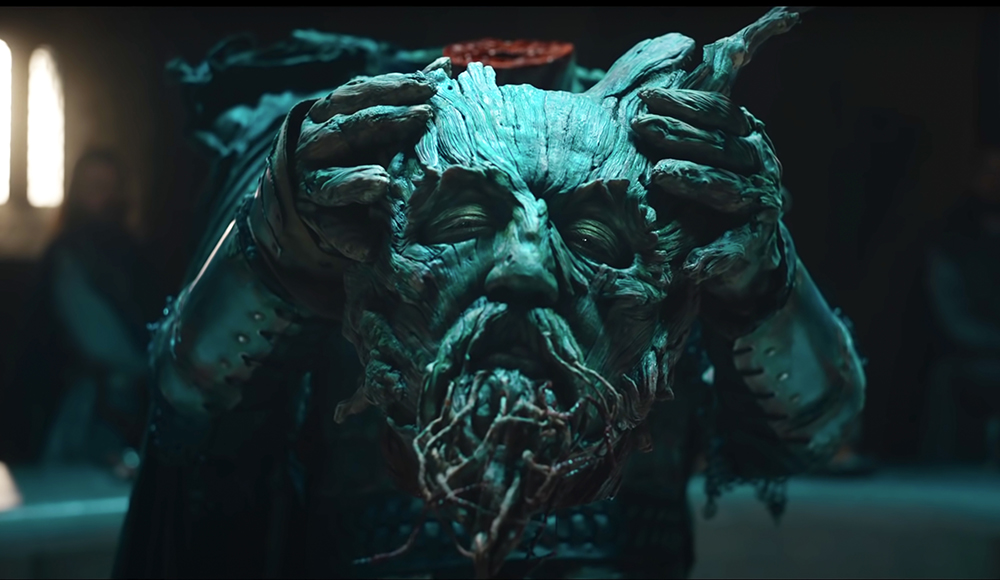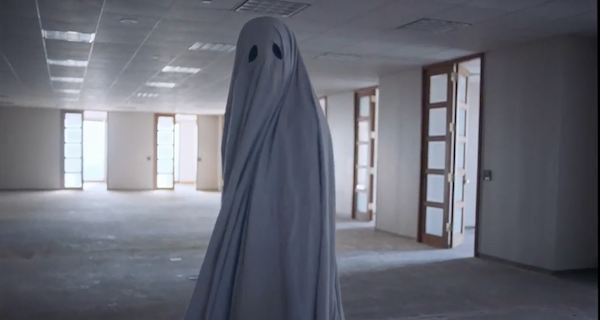King Arthur movies rise and fall like ancient kings in history books. You usually know what to expect: valiancy, swordplay, armor fetishism, forbidden courtly romance, etc. But David Lowery’s The Green Knight is a different breed of fairy tale.
The closest comparison is Excalibur, director John Boorman’s 1981 labor of love. Excalibur was nothing like the turgid Knights of the Round Table from the ’50s or the musical Camelot from the ’60s. It was an attempt to tell a story of King Arthur in a way that the original audience would have understood. Sure, the “original audience” was made up of medieval Christian fanatics imposing their performative masculinity onto stories of a Romano-British warlord, and if you showed them a moving picture rife with gratuitous nudity, they would have burned you for witchcraft, but that didn’t stop Boorman. Excalibur is a visual feast of verdant Irish landscapes and shiny armored men, featuring an all-time great battle sequence filmed in a real medieval castle. But unless you watch it a few times and develop a working knowledge of Thomas Malory’s Le Morte d’Arthur, it’s pretty hard to follow.

The Green Knight signals it’s coming from a similar place with the title card, “Sir Gawain and the Green Knight: A filmed adaptation of the chivalric romance by Anonymous.” When we meet Gawain (Dev Patel), Arthur’s nephew is waking up in a brothel next to Essel (Alicia Vikander), a commoner. It’s Christmas, so he has to sober up and go to dinner with King Arthur (Sean Harris) and Guinevere (Kate Dickie). When his uncle asks him for a story of his exploits, Gawain admits he has never really done anything. That’s when a mysterious figure on horseback charges into Camelot. The Green Knight (Ralph Ineson) delivers a challenge. Any of the brave knights of the Round Table filling their bellies with figgy pudding can come take a free swing at him, but next Christmas, said knight must be willing to journey to the Green Chapel and submit to exactly the same wound he inflicts. Since the Green Knight is 8 feet tall, apparently made out of living wood, and wielding a magic axe, the knights are reluctant to take up his challenge. Gawain, needing stories to tell, volunteers. When Arthur loans him Excalibur, Gawain has an idea: If he cuts off the Green Knight’s head, he won’t have to worry about keeping his end of the bargain! But Gawain’s game theory comes undone when the Green Knight calmly picks up his severed head and says, “See you next year, sucker!” It’s all been a magic test of the future king’s capacity for mercy, and Gawain has failed the pop quiz.
Failure will be a recurring theme for our hero. The next Christmas season, he sets out alone to face decapitation. On the way, he is subject to a series of tests and temptations which, more often than not, he whiffs. Do you see Lancelot getting jumped by bandits and tied to a tree, or accidentally eating magic mushrooms while lost in the forest?
The Green Knight unfolds like a tapestry, as Lowery and cinematographer Andrew Droz Palermo serve up one luscious image after another. The episodic story is held together, to the extent that it is, by Dev Patel’s charismatic performance as a callow, thick-headed youth being dragged kicking and screaming into manhood.
Personally, I loved The Green Knight for its uncompromising vision and flights of downright weirdness, but I realize it’s not for everyone. If you’re looking for Conan the Barbarian-style, hack-and-slash action, you’ll be disappointed. The film has bawdy moments, but there’s no Game of Thrones-style exploitation. There’s humor in Gawain’s plight, but not the Peter Jackson, dwarf-tossing kind. Lowery channels Ingmar Bergman’s The Seventh Seal and, in a stunning, wordless climax, Martin Scorsese’s The Last Temptation of Christ. I found Lowery’s deliberate pacing hypnotic, but as my wife said, “There’s a lot of gazing.” My advice is, don’t worry too much about the intricacies of chivalry and magic. To get on The Green Knight’s wavelength, just sit back and let the mists of Avalon wash over you.





